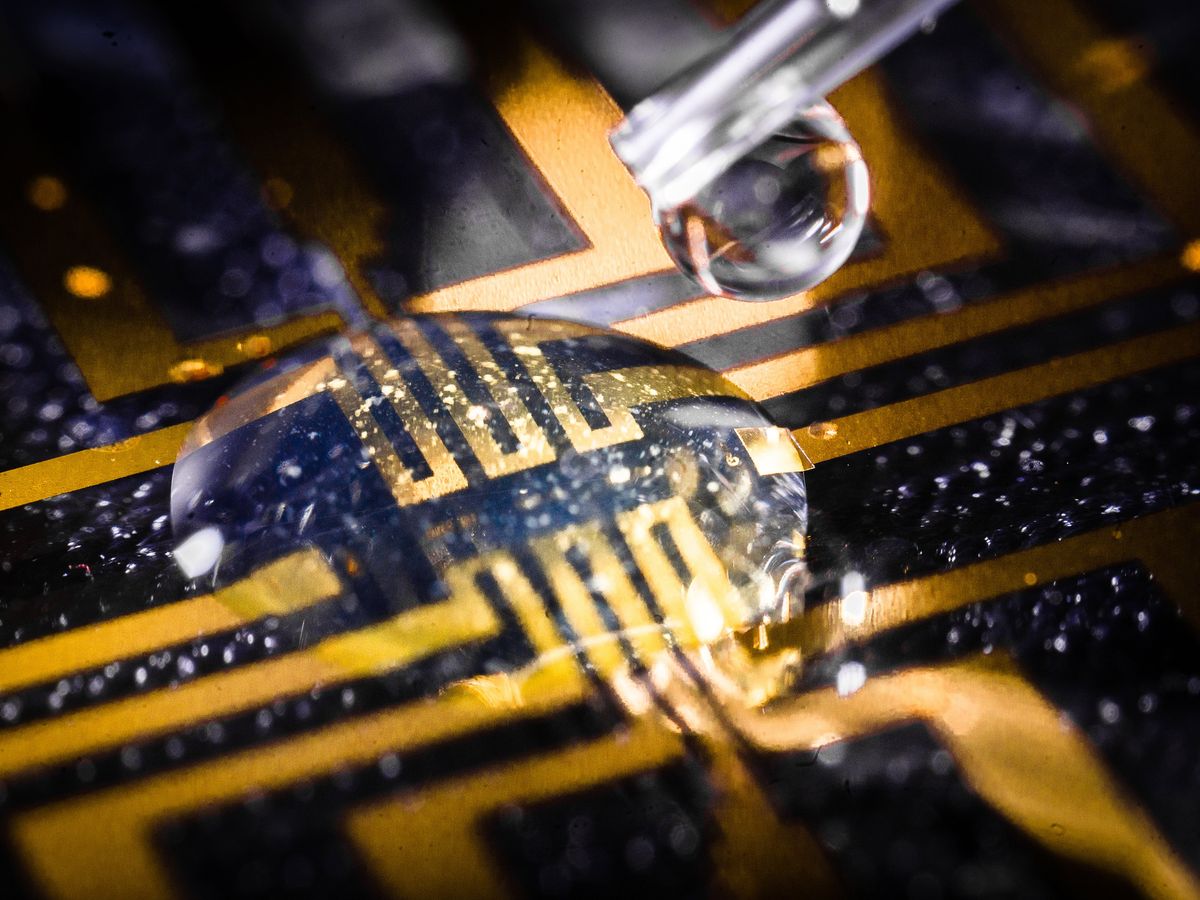Bioelectronics can be made directly inside the brains of live animals by injecting a cocktail of molecules that can transform into electrically conductive gel, a new study finds.
Swedish scientists have created bioelectronics in live zebra fish and leeches with this new technique. In the long term, the ability to turn any living tissue into electronic matter could make it possible to fabricate microchips in live organisms, the researchers say.
By taking advantage of how neurons operate using electrical signals, electronics can interact with brains and nerves to analyze their activity or treat injuries and disorders. However, bodily tissues are mostly soft and flexible, whereas bioelectronic implants are typically hard and rigid. This mismatch can damage the body, which may harm patients and impair the devices.
In the new study, researchers developed a way to fabricate soft, flexible bioelectronics directly within biological tissue. These gel electrodes lack the stiff backing found in conventional electronics, potentially making them more compatible with the human body.
“In the long term, radically new means of bioelectronics are possible, such as new nerve stimulation and recording protocols.” —Magnus Berggren, Linköping University, Sweden
The scientists developed a medley of molecules that, when injected into biological tissue, chemically reacted with naturally occurring compounds such as glucose and lactase to form an electrically conducting gel. (Before the injection, the cocktail is not electrically conductive.)
The Swedish researchers first created electronic roses in 2015. However, plant cells possess rigid walls that can serve as scaffolding to help electrodes form, whereas animal cells lack such structures. Creating a mixture of compounds that could form electronics in animals took years of work.
In experiments, the scientists created gel electrodes in the brain, heart, and tail fins of living zebra fish with no signs of tissue damage. In addition, they showed that the electrically conducting gel could link nerves in medicinal leeches with electrodes on a tiny flexible probe. Moreover, they could grow these electrodes in cow, swine, and chicken muscle.
“With electronics and electrodes formed inside biological systems, invasiveness should be relatively much lower and even zero, compared to introducing hard and rigid standard electronics into soft tissues,” says study senior author Magnus Berggren, a material scientist at Linköping University in Sweden.
In the near future, manufacturing these gel electrodes in live tissues could help improve electrical signal transfer between electronics and biology. “In the long term, radically new means of bioelectronics are possible, such as new nerve stimulation and recording protocols,” Berggren says.
However, a great deal of work remains before this new technique might ever find use in humans. For example, the researchers have to see if these new bioelectronics possess long-term stability in live animals, Berggren says. They also have to show ways to connect these soft electronics with other devices, he adds.
In the future, the Swedish researchers suggest this new technique could make it possible to create fully integrated electronic circuits in live organisms. However, there are many steps before this possibility might become a reality. For instance, “We need to develop means to insulate wires and to build up device structures, such as a p-n-junction or insulator-semiconductor junctions,” Berggren says.
Still, he notes that they have already created transistors and capacitors in live plants. “I am sure we can achieve something similar in mammalian models as well,” he says.
The scientists are now exploring chemicals that might guide molecular building blocks to specific parts of the nervous system “in an attempt to build up components and even circuits,” Berggren says.
The scientists detailed their findings in the 24 February issue of the journal Science.
Charles Q. Choi is a science reporter who contributes regularly to IEEE Spectrum. He has written for Scientific American, The New York Times, Wired, and Science, among others.



